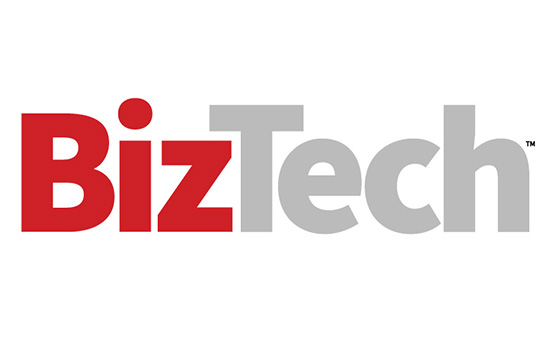Every industry is benefiting from artificial intelligence, but some more than others. Nonprofit organizations, for example, are leaders when it comes to AI adoption: For example, 82% of nonprofits are already using some form of AI today, compared with 58% of all organizations. That may surprise some people who know that nonprofits tend to be resource-strapped and understaffed, but it is precisely those challenges that inspire organizations to experiment with AI, which can function as an extraordinary force multiplier.
For nonprofits, AI presents exciting possibilities: tailoring donor outreach, improving fundraising outcomes and easing the workload on lean staff. However, some nonprofits may be barreling ahead with AI unwisely, without clear policies on how to use the technology and lacking a data governance scheme that sets them up for success. Before proceeding much further, one big challenge that many nonprofits need to clear is moving more, if not all, of their data to the cloud.
Click the banner below to explore new research from CDW on AI use cases and strategy.
Why Cloud Is Foundational to AI Success
The idea of migrating data to the cloud is still relatively new for some nonprofits. While cloud adoption has accelerated across commercial enterprises, nonprofits often face budget constraints, limited IT staff and uncertainty about how to invest. As a result, many still rely on on-premises servers that require maintenance and capital-intensive upgrades.
The problem is that this model makes it extremely difficult to fully leverage AI. AI applications — from predictive donor engagement tools to customer relationship management platforms with built-in intelligence — require structured, accessible and secure data. Cloud platforms such as Microsoft Azure and Amazon Web Services provide that foundation.
RELATED: Maximize nonprofit efficiency with AI and Salesforce tools.
Cloud platforms reduce costs, complexity and IT overhead. When it comes to AI, however, the strategic value for nonprofits is that cloud infrastructure enables responsible, scalable adoption. But there’s no switch to flip — it requires careful preparation:
- Data governance and quality: AI systems are only as good as the data feeding them. Cloud platforms provide the tools for nonprofits to standardize, clean and centralize donor and program data, ensuring algorithms can generate reliable insights.
- Security and compliance: Protecting sensitive donor and beneficiary information is non-negotiable. Major cloud providers offer built-in regulatory compliance frameworks and integrations with advanced security solutions, giving nonprofits a stronger baseline for deploying AI responsibly.
- Application readiness: Many nonprofit CRMs, donor engagement tools and fundraising platforms now ship with embedded AI capabilities such as predictive donor scoring, automated outreach and natural language processing. These features deliver maximum value when powered by the elastic computing and integration capabilities of the cloud.
- Scalability for AI workloads: Training and running AI models can require bursts of processing power. Cloud platforms let nonprofits scale resources up or down on demand, so they can experiment with AI pilots without investing in expensive hardware.
- Integration with AI ecosystems: Both Microsoft Azure and AWS offer nonprofit grant programs and discounts, but they also open the door to their vast AI marketplaces and independent software vendor partner ecosystems — from pretrained models for image recognition to advanced donor analytics tools — that would be out of reach without a cloud foundation.
- Advocate for “think big, start small” pilots: Nonprofits should begin with targeted AI pilots in the cloud, focusing on measurable business outcomes such as increased fundraising, improved donor engagement and greater operational efficiency.
- Provide preconfigured AI tools: Many cloud platforms offer preconfigured AI tools for donor engagement, fundraising intelligence, grant writing, productivity and more. These solutions are vetted for data privacy and security, and often feature nonprofit-specific pricing to ensure accessibility.
In short, moving to the cloud doesn’t just reduce costs and complexity, it sets the stage for sustainable, responsible AI adoption.
Click the banner below to read the full 2024 CDW Cloud Computing Research Report.
How Nonprofits Can Get Help With AI
Every nonprofit is at a different stage of its journey. Some are still managing on-premises servers. Others are already in the cloud but unsure how to optimize their environments for AI. That’s why we provide services tailored to each step.
- Cloud migration: We help nonprofits move workloads securely and cost-effectively to the cloud, ensuring the right mix of Infrastructure as a Service, Platform as a Service, and Software as a Service for their needs.
- Cost optimization: Through tools such as cloud total cost analysis, we help organizations avoid sprawl and keep budgets under control.
- Managed services: Larger nonprofits are adopting AI at nearly twice the rate of smaller ones, but most lack a formal strategy and rely on minimal IT staff. This underscores the need for tailored support and strategic frameworks to help all organizations benefit from cloud and AI. For nonprofits without large IT teams, our managed services provide ongoing monitoring, troubleshooting and engineering support.
- AI readiness workshops: Our generative AI workshops and AI ecosystem evaluations give nonprofits a roadmap for how to use their data responsibly and effectively for AI. Cloud providers and their partners also offer workshops and resources to help organizations establish ethical frameworks and policies for AI adoption.
EXPLORE MORE: Stories from our CommunITy blog on nonprofit IT.
The goal is not just to “move to the cloud” but to do so in a way that positions nonprofits to take advantage of emerging technologies right away, from to AI-enhanced donor insights.
Many nonprofits have held off on cloud adoption, preferring to extend the life of their on-premises systems. But today’s realities, including shifting grant funding models and increasing donor expectations, demand agility. The organizations that act now have an opportunity to start fresh with clean, cloud-based data governance that is AI-ready from the beginning.
The journey to AI begins with data. For most nonprofits, moving to the cloud is realistically the only way to leverage their data for AI. But it’s not easy, and it’s best to have expert guidance every step of the way, from initial assessments through migration, optimization and AI transformation. If your organization is ready to explore how cloud and AI can work together to advance your mission, now is the time to start the conversation.















